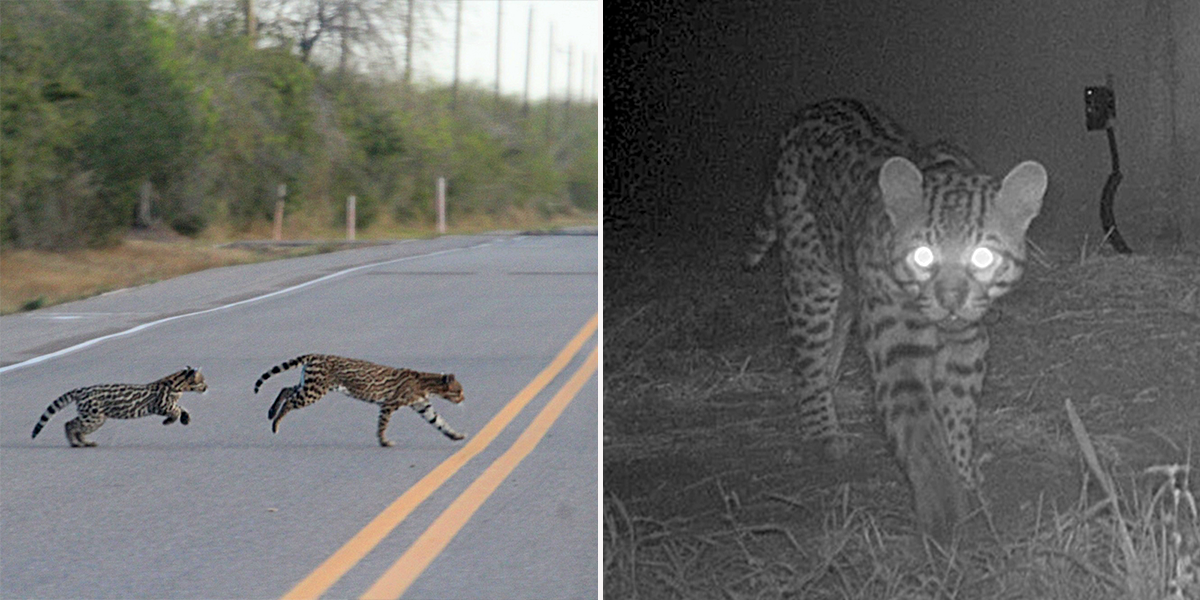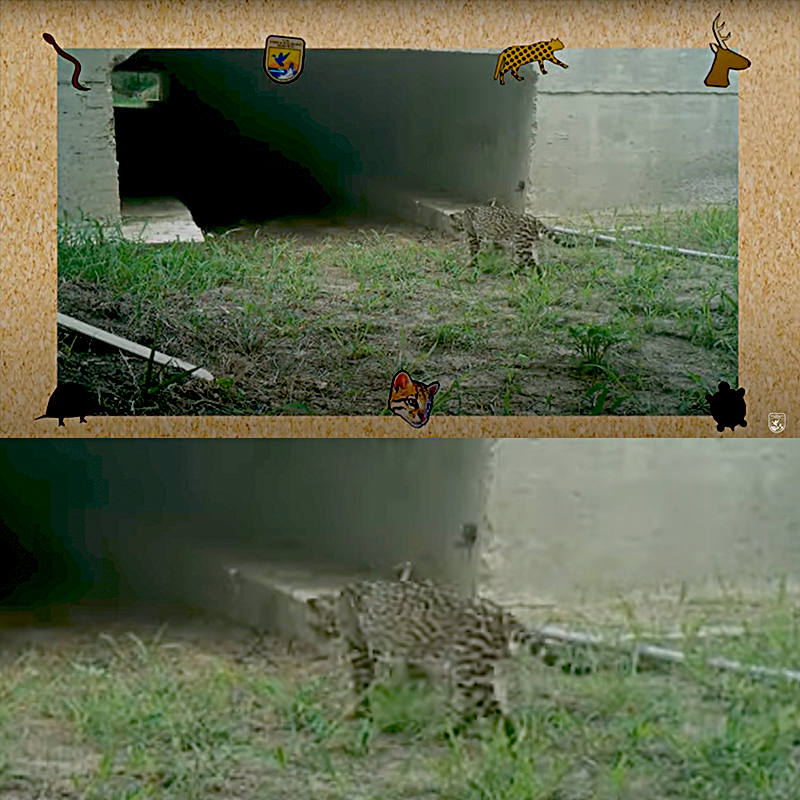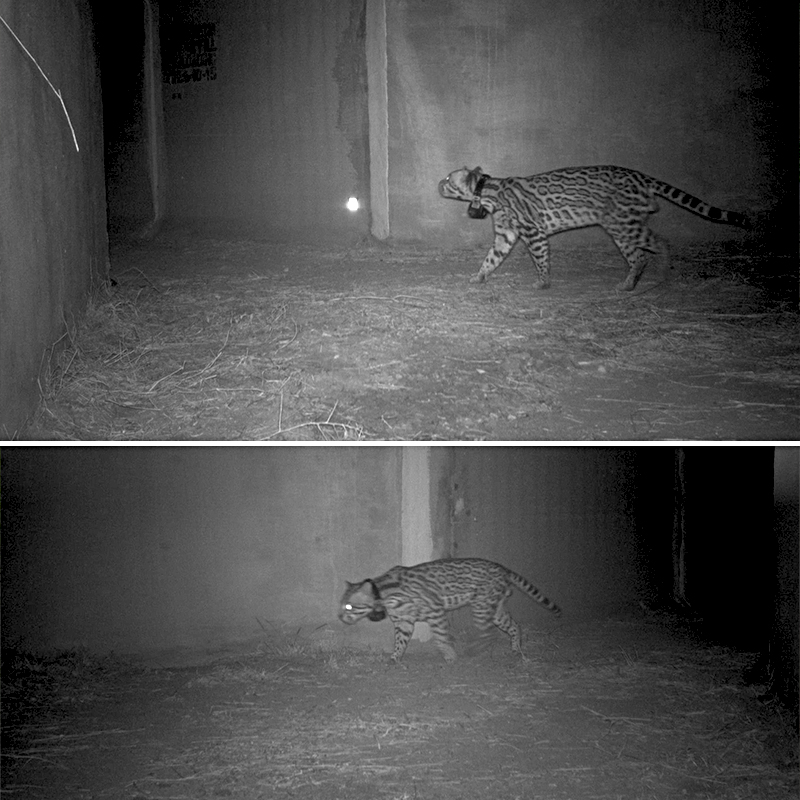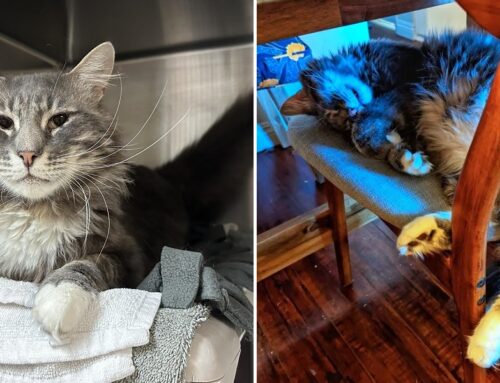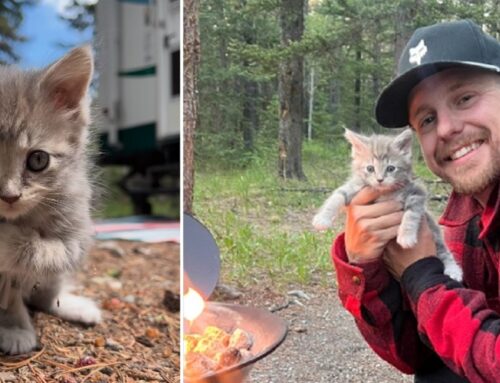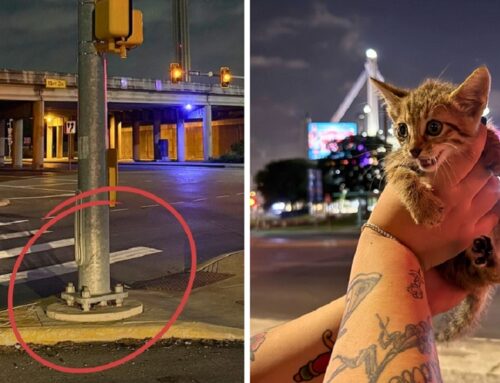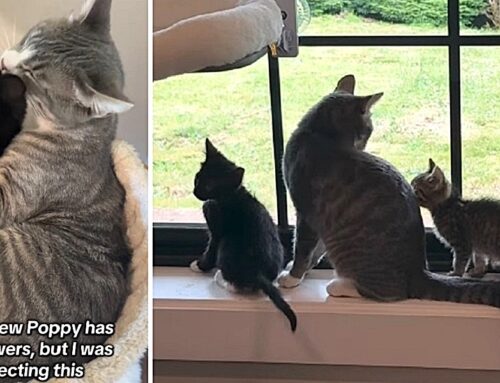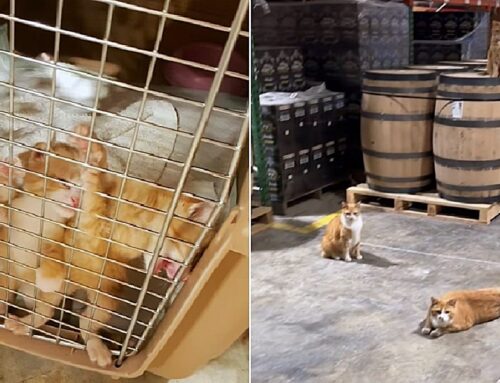It’s a win-win for motorists and endangered ocelots in Texas: a grant for new wildlife crossings in the Laguna Atascosa National Wildlife Refuge. A roadway safety grant of $1.8 million will mean reopening a road that has been closed to protect the cats, giving them a way to cross while hopefully avoiding vehicles. In the past, dangerous collisions killed a “high number” of ocelots, which is why the road closed in 2013.
Vehicles killed at least six male ocelots and a female between June 2015 and April 2016 in South Texas. Tragically, as many as 40% of ocelots die as a result of being hit by a car. (see video below)

Image of mother and kitten ocelot at the refuge recently via Facebook/Viva the Ocelot, Friends of the Laguna Atascosa National Wildlife Refuge
The refuge on the Gulf Coast in Deep South Texas is home to one of the last breeding populations of ocelots remaining in the United States. Less than 100 of the beautiful and sleek cats remain in the state. Once, these beauties roamed from South Texas to Arkansas and Louisiana. Perhaps now they will make the comeback that we all want to see!
Ocelot caught on trail cam at Laguna Atascosa by U.S. Fish & Wildlife Service:
Laguna Atascosa’s New Wildlife Underpasses
Notably, this was the first grant in the Wildlife Crossings Pilot Program, with 19 other similar projects to follow. The funding from the new Bipartisan Infrastructure Law (BIL) goes to the U.S. Department of Transportation’s Federal Highway Administration (FHWA), which is directing the grant to the U.S. Fish & Wildlife Service in Texas.
“We are pleased to announce the first round of grants under the Wildlife Crossings Pilot Program to projects that will significantly reduce the number of collisions between motorists and wildlife,” said Federal Highway Administrator Shailen Bhatt in a press release. “These roadway safety investments will ensure that motorists and wildlife in Texas get to their destinations safely and are a win-win for safety and the environment.”
Screenshots via YouTube/U.S. Fish and Wildlife Service
The First Documented Ocelot Crossing
The wildlife underpasses were first documented in use by an ocelot back in 2020. It took some time for the ocelots to get accustomed to using them after first installations back in 2018. Meanwhile, raccoons, skunks, coyotes, and bobcats readily took to using crossings under State Highway 100 and another road right away.
Unlike other animals, the ocelots don’t become accustomed to living near humans, and prefer it that way. Hilary Swarts, a U.S. Fish and Wildlife Service biologist, described these gorgeous creatures as “the ultimate shrinking violets,” noting they also remained wary of the crossings at first in 2018.
“I don’t want to say its the personality of a species, because I think that’s a little grossly unscientific, but you have species whose tendencies are more toward engagement with the human interface and species which are less that way,” Swarts said. “I would say ocelots are currently in the extreme of not wanting to be around anything human.”
Screenshot via Youtube of an ocelot at Laguna Atascosa National Wildlife Refuge
Once the cats became familiar with the crossings, Swarts said they would likely help “dispersers,” young ocelots forced to venture into new territories by established adults.
Over two years of study, a camera documented the first ocelot using the wildlife underpasses. The cat dubbed OM283, first trapped in 2013, used the underpass in two directions, returning after an hour in the early hours of June 23, 2020.
“We hope we will see him back on camera again soon!” shared Laguna Atascosa National Wildlife Refuge.
Ocelot documented using one of the wildlife underpasses via Facebook in 2020.
Video by U.S. Fish & Wildlife Service about Ocelots and the Wildlife Crossings:
Preventing Thousands of Wildlife-Vehicle Collisions
It’s common sense that such underpasses can help wildlife, and not just endangered cats. Laguna Atascosa National Wildlife Refuge is one of the most biologically diverse regions in North America. It’s home to all kinds of animals: bobcats, a Texas tortoise, foxes, endangered sea turtles, peccaries, and so much more.
Nationwide, collisions with wildlife cause around 200 human deaths and 26,000 injuries. But underpasses can help prevent that while giving important wildlife a way to avoid dangers, too. Of course, we also need to keep protecting parks where wildlife will never encounter moving vehicles.
Previously, we shared the story of the famous California mountain lion, P-22, whose life inspired a similar concept: a wildlife bridge across the 101 freeway in Agoura Hills. Dubbed the Wallis Annenberg Wildlife Crossing, it’s gathered enough public and private funding to be on track for opening in 2025.
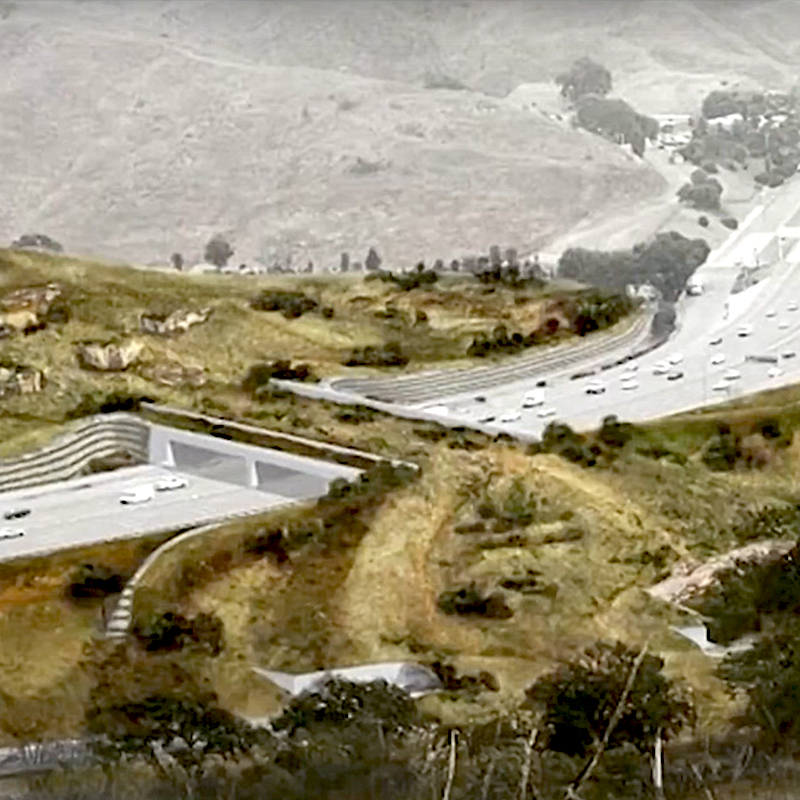
The Wallis Annenberg Wildlife Crossing in California conceptual image via YouTube
Making a safe place for wildlife in our modern world is possible and ultimately essential to our own well-being. So, we’re excited to see projects designed to help endangered cats and all wildlife on the horizon, and now, with funding set aside by the government. We know Big Cats and all wildlife are absolutely worth protecting in our nation’s infrastructure!


